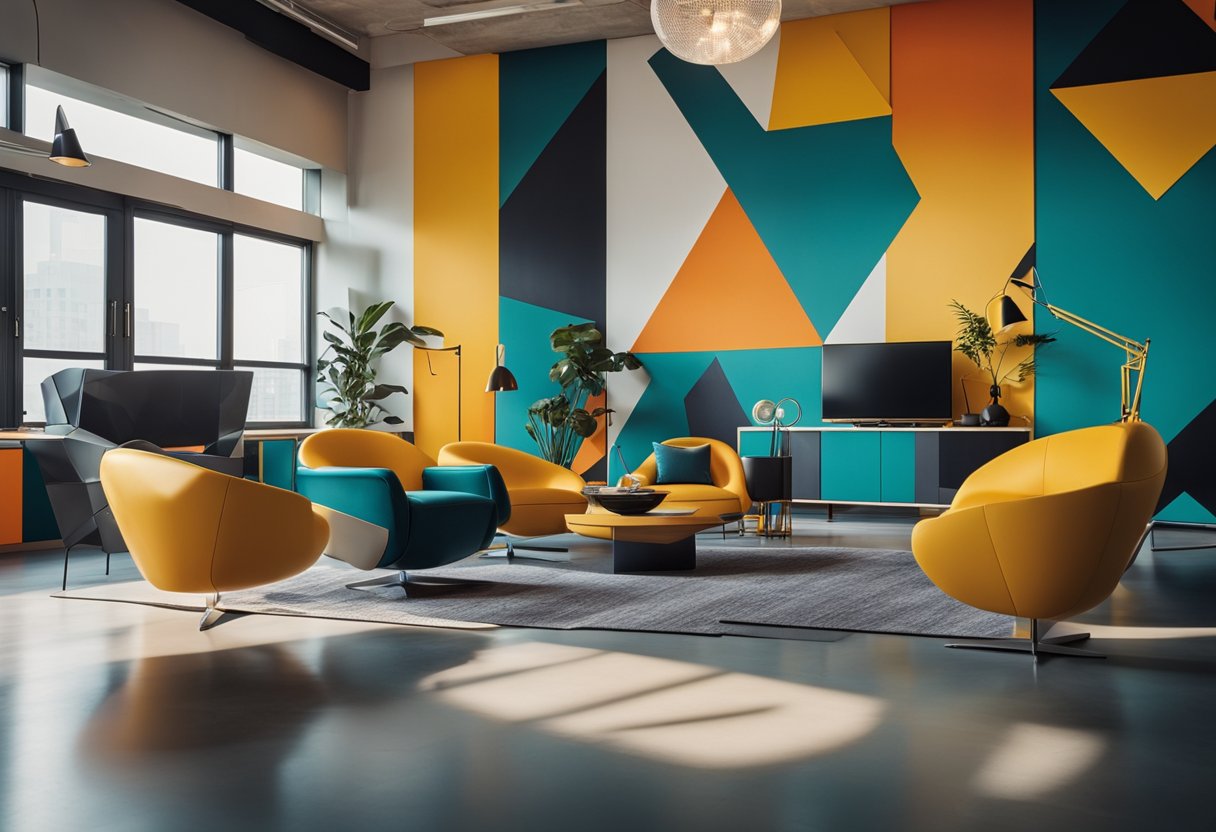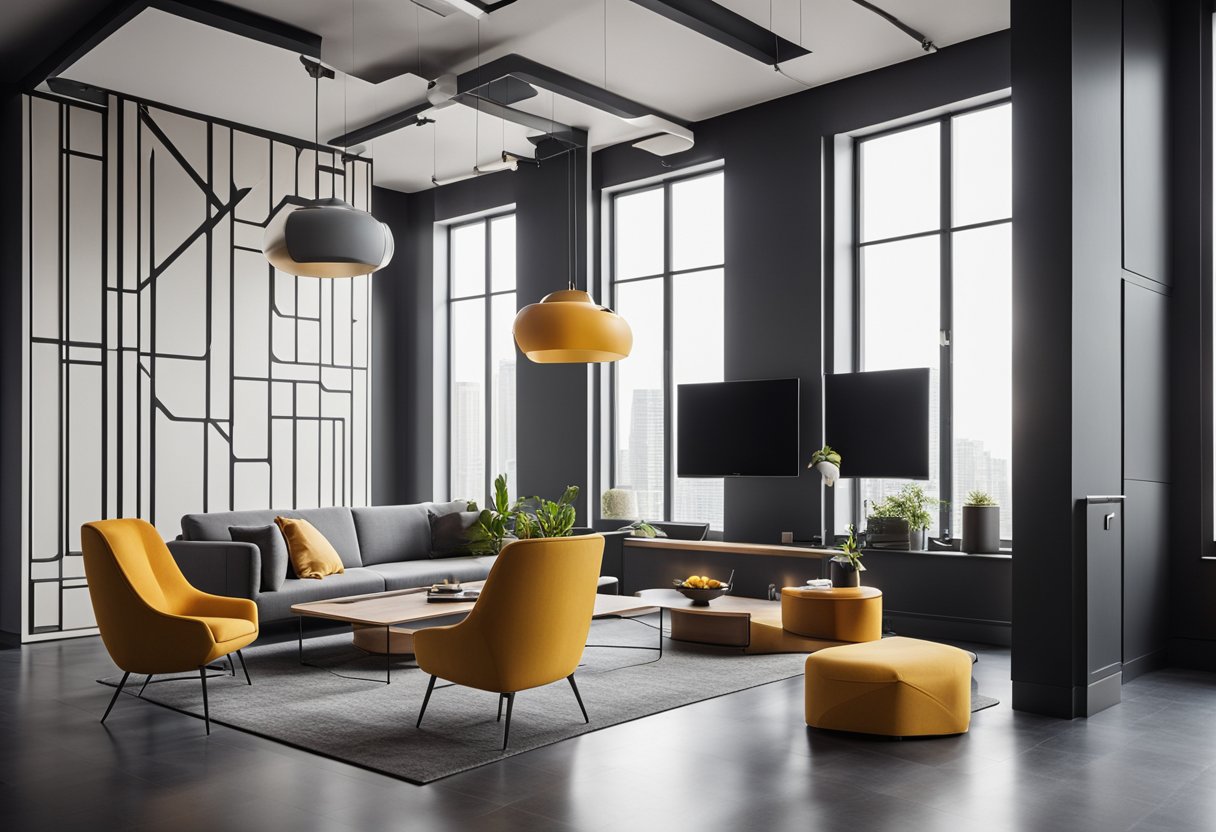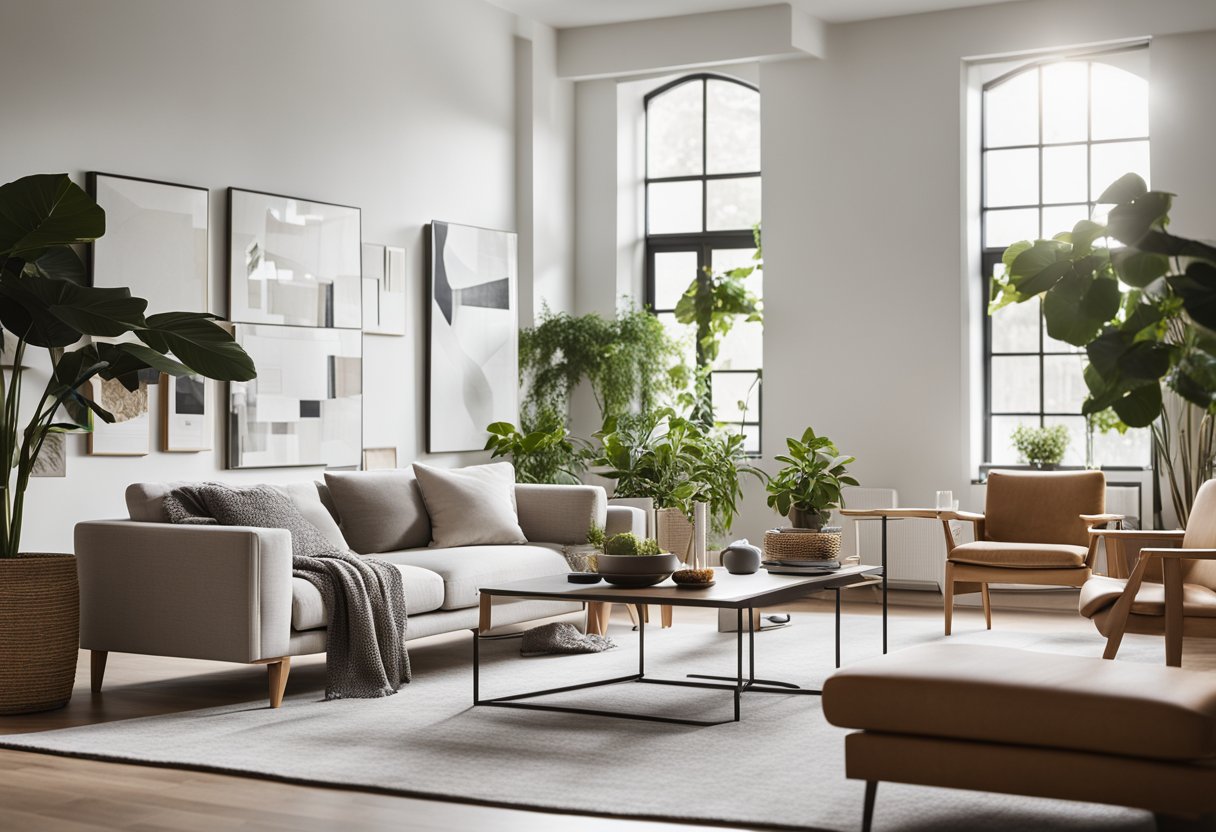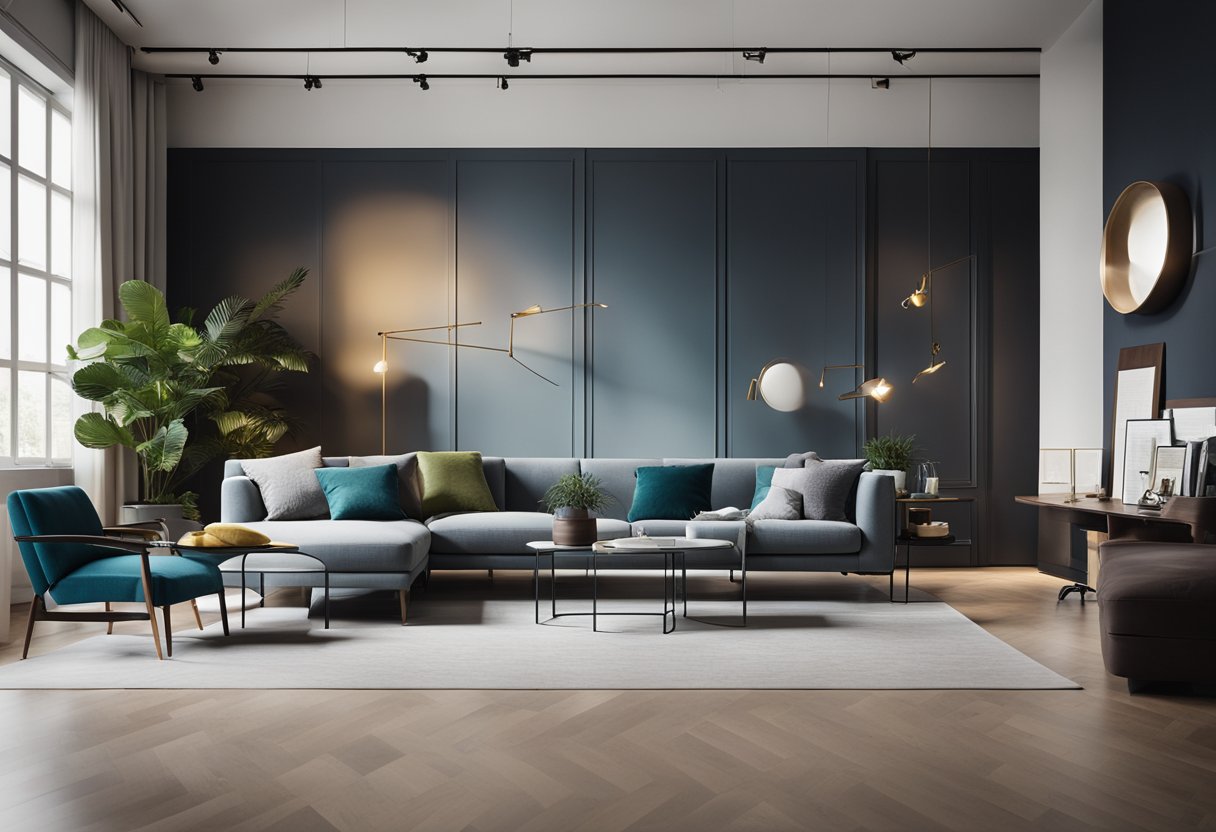Constructivism Interior Design: The Art of Creating Bold and Geometric Spaces
If you’re looking for a design style that’s both functional and visually appealing, then Constructivism may be just what you need. This interior design style emerged in Russia in 1919 and is characterised by its focus on modernity and functionality. It’s all about creating spaces that are practical, efficient, and aesthetically pleasing.

At its core, Constructivism is all about using simple geometric shapes, clean lines, and neutral colours to create a sense of balance and harmony. It’s an approach that values function over form, and it’s perfect for those who want to create spaces that are both beautiful and practical. Whether you’re designing a home, an office, or a public space, Constructivism can help you achieve your goals.
One of the key foundations of Constructivism is the idea that art should be integrated into everyday life. This philosophy is reflected in the way that Constructivist designers approach interior design, with an emphasis on creating spaces that are both functional and beautiful. By prioritising practicality and efficiency, Constructivism offers a refreshing alternative to more traditional design styles.
Key Takeaways
- Constructivism is an interior design style that emerged in Russia in 1919.
- It values function over form, and is characterised by its focus on modernity and efficiency.
- Constructivism is all about creating spaces that are both practical and aesthetically pleasing.
Foundations of Constructivism in Interior Design

If you’re interested in interior design, you’ve probably heard of constructivism. It’s a design movement that emerged in Russia in 1919, in response to the crisis of modernity that was sweeping across Europe. The art industry was changing rapidly, and designers were looking for new ways to create functional solutions that were also aesthetically pleasing.
Historical Context and Origins
Constructivism was born out of this natural reaction to the changes that were taking place. It was a movement that celebrated simplicity, functionality, and rationality. The materials used were often metal, glass, and wood, and the colours were typically red, black, and white, with occasional colour accents in yellow or blue.
Principles and Aesthetics
The furniture and decor in constructivist interiors were utilitarian in form, with laconic shapes and clean lines. Lighting was often embedded in niches or used to create spatial dynamics. The design process was focused on functionality and creativity, with an emphasis on natural light and the use of materials in unexpected ways.
Influence on Modern Interiors
Today, the influence of constructivism can be seen in many modern interiors. The movement’s emphasis on functional design and the use of new technologies has made it a favourite among designers who are looking to create spaces that are both beautiful and practical.
Key Materials and Colours
The materials used in constructivism are often metal, glass, and wood. The colours are typically red, black, and white, with occasional colour accents in yellow or blue.
Furniture and Decor
The furniture and decor in constructivist interiors were utilitarian in form, with laconic shapes and clean lines.
Lighting and Spatial Dynamics
Lighting was often embedded in niches or used to create spatial dynamics.
Constructivism and Contemporary Design
The influence of constructivism can be seen in many modern interiors.
Constructivist Influence on Architecture
Constructivism has also had a significant influence on architecture, with many constructivist buildings still standing today.
Visual Arts and Constructivism
Constructivism has had a significant impact on the visual arts, including decorative art, photography, and composition.
Design Movements and Constructivism
Constructivism was part of a larger design movement that included art nouveau, baroque, romantic modernism, and empire.
Notable Constructivist Designers
Notable constructivist designers include Walter Gropius, who helped to establish the Bauhaus, and El Lissitzky, who was known for his work in graphic design and typography.
Global Reach and Adaptation
Constructivism has had a global reach, with designers and architects around the world adapting its principles to suit their own needs.
Critiques and Evolution
Like any design movement, constructivism has faced critiques and evolved over time.
The Future of Constructivist Design
As we move into the future, it will be interesting to see how constructivism continues to evolve and influence the world of interior design. Its emphasis on functionality, creativity, and rationality make it a timeless design philosophy that will continue to inspire designers for years to come.
Case Studies and Applications

As constructivism continues to shape the world of interior design, it is important to examine its practical applications in various contexts. From residential spaces to commercial and public buildings, furniture design to artistic expression, and sustainability to restoration efforts, constructivism principles can be seen in a wide range of projects.
Residential Spaces
In residential buildings, constructivism principles are often applied to create functional and visually appealing interiors. Materiality plays a crucial role in this context, with stucco decoration, wood, glass, and metal being popular choices for creating a balanced composition. Built-in appliances and new technologies are also incorporated to enhance the overall functionality of the space.
Commercial and Public Buildings
In commercial and public buildings, constructivism principles are used to create urban complexes that are both functional and visually striking. The use of technology, materials, and geometry is common in these spaces, with curtains and other decorative elements being used to create a cohesive visual experience.
Furniture Design and Innovation
Furniture design and innovation are also areas where constructivism principles are applied. Creativity and visual arts are often used to create unique pieces that are both functional and visually appealing. In addition, sustainability is also a key consideration in furniture design, with materials and natural reactions being taken into account.
Interior Design Trends and Constructivism
Constructivism has also had a significant impact on interior design trends. The use of decorative art and composition to create visually appealing spaces is a common theme in many contemporary designs. Sustainability and materiality are also important considerations in modern interior design.
Technological Advancements and Materials
Technological advancements and new materials have also had a significant impact on the application of constructivism principles in interior design. The use of glass, metal, and other new materials has opened up new possibilities for creating visually striking and functional spaces.
Artistic Expression and Interior Spaces
Artistic expression is also an important consideration in the application of constructivism principles in interior spaces. The use of decorative elements, colours, and composition can all be used to create unique and visually appealing interiors.
Sustainability and Constructivist Principles
Sustainability is a key consideration in the application of constructivist principles in interior design. The use of natural materials and the consideration of environmental impact are important factors in the creation of sustainable interiors.
Educational and Cultural Projects
Constructivism principles are also applied in educational and cultural projects. The cultural significance of historical buildings is often taken into account in restoration and preservation efforts. Educational projects also often incorporate constructivism principles to create functional and visually appealing spaces.
Restoration and Preservation Efforts
Restoration and preservation efforts also often incorporate constructivism principles. The use of historical materials and the consideration of cultural significance are important factors in these projects.
Global Constructivist Movements
Finally, constructivism has had a significant impact on global design movements. The adaptation of constructivist principles in various contexts has led to the creation of unique and visually striking spaces across the world.
Frequently Asked Questions

How can I infuse my living space with the spirit of the constructivist movement?
To infuse your living space with the spirit of the constructivist movement, you can start by incorporating geometric shapes, bold colours, and clean lines into your design. The movement was all about simplicity and functionality, so aim for a minimalist look with a focus on practicality. You can also look for furniture and decor pieces that have a strong industrial feel, as this was a key element of the constructivist aesthetic.
In what ways does constructivism influence modern home decor?
Constructivism has had a significant impact on modern home decor, with its emphasis on geometric shapes, bold colours, and clean lines. Many contemporary designers draw inspiration from the movement’s functionalist approach, and incorporate its principles into their work. You can see the influence of constructivism in everything from furniture design to lighting to wallpaper patterns.
What are the defining elements that make a room embody constructivist design?
The defining elements of constructivist design include geometric shapes, bold colours, and clean lines. The movement was all about simplicity and functionality, so aim for a minimalist look with a focus on practicality. You can also look for furniture and decor pieces that have a strong industrial feel, as this was a key element of the constructivist aesthetic.
How do constructivist principles shape the functionality of interior spaces?
Constructivist principles shape the functionality of interior spaces by emphasizing practicality and simplicity. The movement was all about creating functional objects that were also visually appealing, so aim for a minimalist look with a focus on practicality. You can also look for furniture and decor pieces that have a strong industrial feel, as this was a key element of the constructivist aesthetic.
Can you suggest ways to incorporate constructivist design in small apartments?
To incorporate constructivist design in small apartments, you can start by incorporating geometric shapes, bold colours, and clean lines into your design. The movement was all about simplicity and functionality, so aim for a minimalist look with a focus on practicality. You can also look for furniture and decor pieces that have a strong industrial feel, as this was a key element of the constructivist aesthetic. Finally, consider using mirrors to create the illusion of more space.
What are some iconic constructivist pieces that could serve as inspiration for home interiors?
Some iconic constructivist pieces that could serve as inspiration for home interiors include the LC2 armchair by Le Corbusier, the Wassily Chair by Marcel Breuer, and the Red and Blue Chair by Gerrit Rietveld. These pieces all incorporate the key elements of the constructivist aesthetic, including geometric shapes, bold colours, and clean lines.



